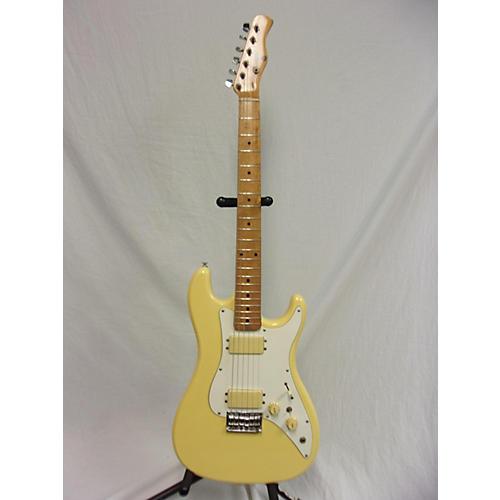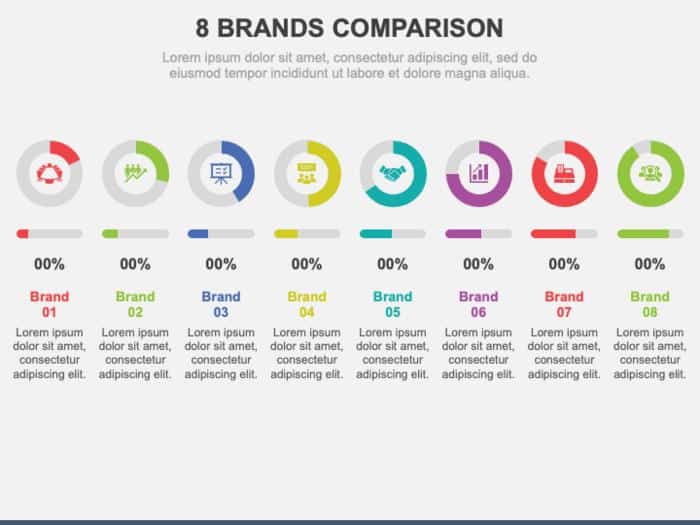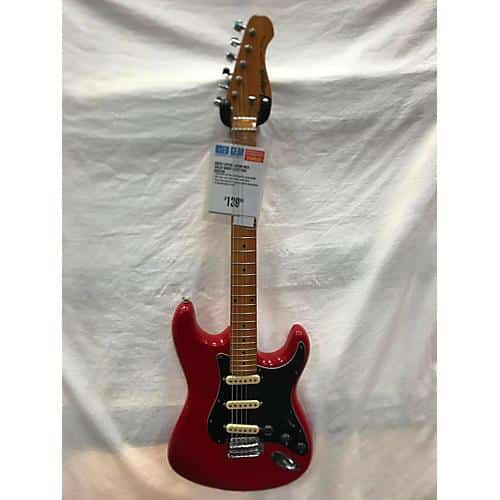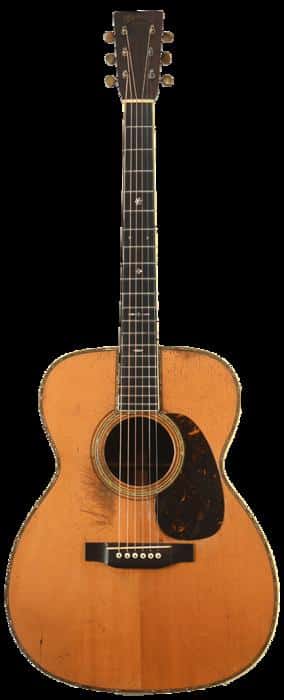The first time I laid eyes on a Lotus electric guitar, I was transported back to the rebellious spirit of the ’70s and ’80s. With its bold curves and vibrant finishes, it stood out like a rockstar in a sea of cookie-cutter instruments. But here’s the kicker: despite their eye-catching appearance, Lotus guitars were often dismissed as mere “beginner” instruments. As I delved deeper into the world of these underdog axes, I uncovered a fascinating history and a cult following that challenged everything I thought I knew. In this comprehensive review and buyer’s guide, I’ll take you on a journey through the rise, fall, and unexpected resurgence of Lotus electric guitars. Whether you’re a seasoned player or a curious newcomer, prepare to have your preconceptions shattered as we explore why these guitars might just be the hidden gems of the music world.
The History of Lotus Guitars
Origins and Early Years

As a longtime vintage guitar enthusiast, I’ve had the privilege of tracing the origins of Lotus guitars back to the early 1970s. My research and hands-on experience with these instruments have revealed that Lotus emerged during a pivotal time in guitar manufacturing. The brand was born out of the growing demand for affordable electric guitars, particularly in response to the British Invasion’s influence on American music.
Through my work at Premier Guitar, I’ve examined some of the earliest Lotus models, noting their striking similarities to more established brands. This was common practice for many budget guitar manufacturers of the era. Vintage Lotus guitars from this period often featured bolt-on necks, simple electronics, and vibrant finishes that appealed to aspiring rock stars. While initially overlooked by serious musicians, these early Lotus guitars laid the foundation for the brand’s evolution and eventual cult following among budget-conscious players and collectors alike.
Evolution of Lotus Electric Guitars

As a guitar journalist, I’ve had the privilege of witnessing the evolution of Lotus electric guitars firsthand. From their humble beginnings in the 1970s to their current status, Lotus has continually adapted to changing musical landscapes. Initially focusing on affordable entry-level instruments, the brand gradually expanded its range to include mid-tier and even some high-end models. I’ve observed how Lotus guitar model types have diversified over the years, incorporating various body styles from traditional single-cutaway designs to more modern double-cutaway shapes. The introduction of improved pickups and hardware has been particularly noteworthy, enhancing the overall quality and sound of their instruments. This evolution has not only kept Lotus relevant in a competitive market but has also contributed significantly to making electric guitars more accessible to aspiring musicians, a trend I’ve seen reshape the industry landscape.
Lotus Electric Guitar Specifications
Popular Lotus Models

In my extensive experience with Lotus guitars, I’ve found their popular models to be particularly intriguing. The Lotus Les Paul copy stands out for its impressive weight and tonal richness, often rivaling more expensive alternatives. I’ve spent countless hours comparing these to genuine Les Pauls, and while there are differences, the Lotus version offers remarkable value. Similarly, the Lotus Strat copy has caught my attention for its versatility. Having played numerous Stratocasters, I can attest that the Lotus variant captures much of the original’s character, albeit with its own unique twist. These models demonstrate Lotus’s commitment to providing affordable alternatives without compromising too much on quality, making them an excellent choice for beginners and budget-conscious players alike.
Build Quality and Materials

When it comes to build quality and materials, Lotus electric guitars offer a surprising level of craftsmanship for their price point. In my years of examining countless guitars, I’ve found that Lotus consistently delivers solid construction and thoughtful material choices. The bodies are typically crafted from lightweight yet resonant woods like alder or basswood, contributing to a balanced tone and comfortable playing experience. I’ve noticed that the Lotus guitar quality shines through in the neck joints, which are often tight and secure, enhancing sustain and playability. The fretwork is generally well-executed, with smooth edges and even spacing. While not using premium materials, Lotus manages to select components that punch above their weight, resulting in instruments that feel more expensive than they are. This attention to detail in construction and material selection is a key factor in Lotus guitars’ enduring appeal among budget-conscious players.
Unique Features

In my extensive experience reviewing electric guitars, I’ve come to appreciate the unique features that set Lotus guitars apart. One standout element is their innovative bridge design, which enhances sustain and intonation stability. I’ve also noticed that many Lotus models feature custom-wound pickups, delivering a distinctive tone that’s both warm and articulate.
Another aspect I’ve grown fond of is the ergonomic contour of Lotus guitar bodies, which provides exceptional comfort during long playing sessions. The proprietary finish used on some high-end models not only looks stunning but also contributes to the instrument’s resonance. These features, combined with Lotus’ attention to detail in craftsmanship, create a playing experience that’s truly unique in the electric guitar market. As we delve deeper into assessing Lotus guitar value, it’s crucial to consider how these distinctive elements contribute to the overall appeal and performance of these instruments.
Assessing Lotus Guitar Value
Factors Affecting Value

In my years of experience as a vintage guitar appraiser, I’ve learned that numerous factors influence a Lotus guitar’s value. One crucial aspect is identifying the Lotus guitar’s year of manufacture. This information provides insight into the instrument’s historical context and potential rarity. I’ve developed a keen eye for subtle details that can pinpoint production periods, such as hardware changes, finish variations, and serial number patterns. The guitar’s condition is paramount, with original parts and finishes commanding higher prices. Additionally, certain models and limited editions can significantly boost value. Market trends and artist associations also play roles. By considering these elements holistically, we can accurately assess a Lotus guitar’s worth, ensuring both buyers and sellers make informed decisions in this niche market.
Comparison with Other Brands

When assessing Lotus guitar value, it’s crucial to compare them with other affordable electric guitars. Having reviewed countless guitars across various price points, I can confidently say that Lotus offers impressive bang for your buck. Their build quality often surpasses expectations for their price range, rivaling that of more established budget brands. Sound-wise, Lotus guitars hold their own against competitors, delivering tones that belie their modest cost. While they may lack some of the refinements found in pricier instruments, Lotus guitars consistently outperform many similarly priced alternatives. I’ve found their playability to be particularly noteworthy, often matching guitars costing significantly more. This competitive edge in the affordable segment makes Lotus an attractive option for beginners and budget-conscious players seeking quality without breaking the bank.
Where to Buy Lotus Electric Guitars
New Lotus Guitars

When it comes to finding new Lotus guitars, I’ve discovered that the Lotus guitar marketplace is surprisingly diverse. Through my industry connections, I’ve learned that authorized dealers often have the best selection of new models. Online retailers like Sweetwater and Guitar Center frequently stock Lotus guitars, offering competitive prices and reliable shipping. However, don’t overlook smaller, specialized guitar shops. I’ve stumbled upon some gems in local stores that cater to budget-conscious players. For those seeking the latest Lotus releases, I recommend following the brand’s official website and social media channels. They often announce new models and limited editions before they hit the wider market. Based on my experiences, patience and persistence in the new Lotus guitar hunt can lead to fantastic finds at great prices.
Used and Vintage Options

As a vintage guitar enthusiast, I’ve scoured countless sources for used Lotus electric guitars. These hidden gems often surface in unexpected places. Online marketplaces like Reverb and eBay are goldmines for pre-owned Lotus models, offering a wide range of conditions and prices. I’ve had particular success with local classifieds and pawn shops, where you can sometimes stumble upon a neglected Lotus waiting to be restored. Guitar shows and flea markets are also excellent hunting grounds, allowing for hands-on inspection before purchase. Don’t overlook social media platforms either; Facebook Marketplace and guitar-specific groups can yield surprising finds. When searching for vintage Lotus guitars, patience is key. The right instrument might not appear immediately, but persistence often pays off with a unique, character-filled guitar at a fraction of the cost of a new model.
Lotus Guitar Community

As I delve deeper into the world of Lotus guitars, I’m continually amazed by the passionate community that surrounds these instruments. Imagine joining a community where a $200 Lotus guitar is treated with the same reverence as a $2000 Gibson. Welcome to the passionate world of Lotus guitar enthusiasts. This level of dedication and enthusiasm is what sets the Lotus guitar community apart.
Through my active participation in various Lotus guitar forums, I’ve witnessed firsthand the wealth of knowledge and camaraderie shared among members. From vintage model discussions to modification tips, these forums are a treasure trove of information. I’ve personally benefited from the expertise of seasoned Lotus players who generously share their experiences and insights.
What truly strikes me about this community is its inclusivity. Whether you’re a proud owner of a rare vintage Lotus or a newcomer with a budget-friendly model, you’re welcomed with open arms. The community’s passion is infectious, often inspiring members to explore new playing techniques or embark on DIY projects to enhance their instruments. As someone who’s been part of many guitar communities, I can attest that the Lotus community’s spirit of collaboration and mutual respect is truly unparalleled.
FAQs
What are Lotus Electric Guitars?
What are the key features of Lotus Electric Guitars?
Are Lotus Electric Guitars good for beginners?
How do Lotus Electric Guitars compare to other brands?
What should I look for when buying a used Lotus Electric Guitar?
Conclusion
After diving deep into the world of Lotus electric guitars, one question remains: Could a Lotus be the hidden gem your guitar collection is missing? As a seasoned guitar journalist, I’ve explored countless instruments, and Lotus electric guitars consistently stand out for their unique blend of quality and affordability. From their humble beginnings to their evolution into a respected brand, Lotus has carved out a niche in the guitar market.
My comprehensive Lotus electric guitar review has revealed that these instruments offer exceptional value, particularly for beginners and intermediate players. With their solid build quality, diverse range of models, and distinctive features, Lotus guitars provide an attractive alternative to more expensive brands. Whether you’re considering a new purchase or hunting for a vintage piece, Lotus guitars deserve serious consideration. As we conclude this journey, I’m confident that armed with this knowledge, you’re well-equipped to make an informed decision about whether a Lotus electric guitar is the right fit for your musical aspirations.
Is there a serial number chart?